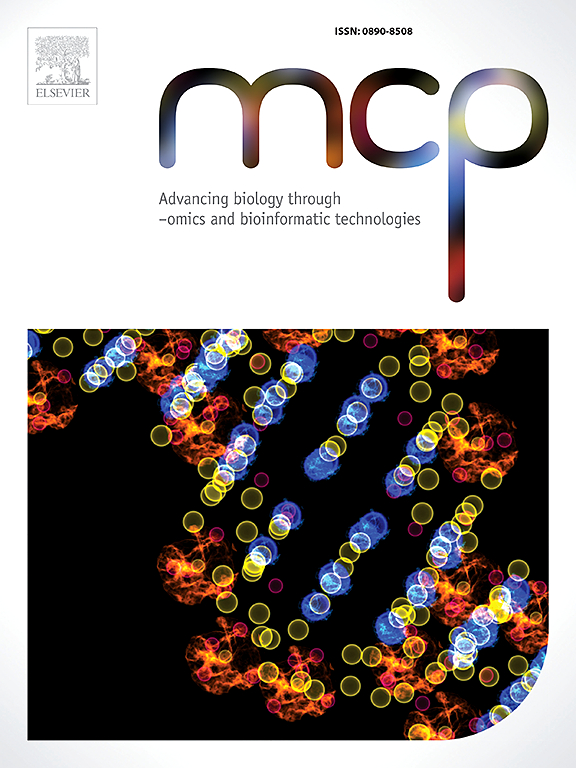敲除 Caspase-1 可破坏裂解过程并保护感光细胞免受光化学损伤
IF 2.3
3区 生物学
Q3 BIOCHEMICAL RESEARCH METHODS
引用次数: 0
摘要
目的:视网膜光化学损伤(RPD)在各种眼部疾病的发生发展中起着重要作用,而Caspase-1是其中的关键因素。本研究探讨了 Caspase-1 基因介导的热蛋白沉积对 RPD 的保护作用:方法:通过分析 GEO 数据库中的两个表达谱,确定了与 RPD 相关的差异表达基因(DEGs)。方法:通过分析 GEO 数据库中的两个表达谱,确定了与 RPD 相关的差异表达基因(DEGs),并利用相关性分析确定了与 RPD 相关的热蛋白沉积相关基因(PRGs)。通过 CRISPR-Cas9 基因编辑生成了 Caspase-1 基因敲除的 661W 细胞系,并筛选和纯化了单细胞菌落。通过 RT-qPCR、基因测序和 Western 印迹分析对基因敲除细胞进行了验证。在光照条件下,对野生型细胞和 Caspase-1 基因敲除细胞的细胞增殖、细胞内活性氧(ROS)和细胞毒性进行了比较分析。进一步的 RT-qPCR 和 Western 印迹实验检测了主要热蛋白沉积途径成分的 mRNA 和蛋白质水平的变化:结果:在 PRGs 中观察到 Caspase-1 表达的显著变化。通过 RT-qPCR、基因组 PCR 产物测序和 Western 印迹分析确认了同基因 Caspase-1 基因敲除细胞系。与野生型 661W 细胞相比,Caspase-1 基因敲除细胞在光照 24 小时后表现出更高的存活率和增殖率,同时 LDH 释放量减少。Caspase-1基因敲除组的下游热休克因子在mRNA和蛋白质水平上的表达都明显下降:结论:CRISPR/Cas9介导的Caspase-1基因敲除增强了661W细胞对光化学损伤的抵抗力,这表明Caspase-1可作为RPD相关疾病的潜在治疗靶点。本文章由计算机程序翻译,如有差异,请以英文原文为准。
Caspase-1 knockout disrupts pyroptosis and protects photoreceptor cells from photochemical damage
Aim
Retinal photochemical damage (RPD) plays a significant role in the development of various ocular diseases, with Caspase-1 being a key contributor. This study investigates the protective effects of Caspase-1 gene-mediated pyroptosis against RPD.
Methods
Differentially expressed genes (DEGs) associated with RPD were identified through the analysis of two expression profiles from the GEO database. Correlation analysis was used to pinpoint pyroptosis-related genes (PRGs) linked to RPD. A Caspase-1 knockout 661 W cell line was generated via CRISPR-Cas9 gene editing, and single-cell colonies were screened and purified. Validation of knockout cells was performed through RT-qPCR, gene sequencing, and Western blot analysis. Comparative assays on cell proliferation, intracellular reactive oxygen species (ROS), and cytotoxicity were conducted between wild-type and Caspase-1 knockout cells under light exposure. Further RT-qPCR and Western blot experiments examined changes in the mRNA and protein levels of key pyroptosis pathway components.
Results
Significant alterations in Caspase-1 expression were observed among PRGs. Homozygous Caspase-1 knockout cell lines were confirmed through RT-qPCR, genomic PCR product sequencing, and Western blot analysis. Compared to wild-type 661 W cells, Caspase-1 knockout cells exhibited higher viability and proliferation rates after 24 h of light exposure, alongside reduced LDH release. The expression of downstream pyroptosis factors at both the mRNA and protein levels was markedly decreased in the knockout group.
Conclusion
CRISPR/Cas9-mediated Caspase-1 knockout enhanced the resistance of 661 W cells to photochemical damage, suggesting that Caspase-1 may serve as a potential therapeutic target for RPD-related diseases.
求助全文
通过发布文献求助,成功后即可免费获取论文全文。
去求助
来源期刊

Molecular and Cellular Probes
生物-生化研究方法
CiteScore
6.80
自引率
0.00%
发文量
52
审稿时长
16 days
期刊介绍:
MCP - Advancing biology through–omics and bioinformatic technologies wants to capture outcomes from the current revolution in molecular technologies and sciences. The journal has broadened its scope and embraces any high quality research papers, reviews and opinions in areas including, but not limited to, molecular biology, cell biology, biochemistry, immunology, physiology, epidemiology, ecology, virology, microbiology, parasitology, genetics, evolutionary biology, genomics (including metagenomics), bioinformatics, proteomics, metabolomics, glycomics, and lipidomics. Submissions with a technology-driven focus on understanding normal biological or disease processes as well as conceptual advances and paradigm shifts are particularly encouraged. The Editors welcome fundamental or applied research areas; pre-submission enquiries about advanced draft manuscripts are welcomed. Top quality research and manuscripts will be fast-tracked.
 求助内容:
求助内容: 应助结果提醒方式:
应助结果提醒方式:


